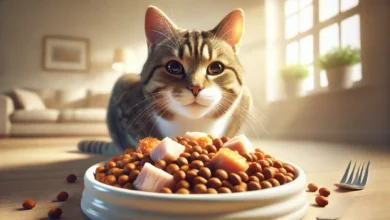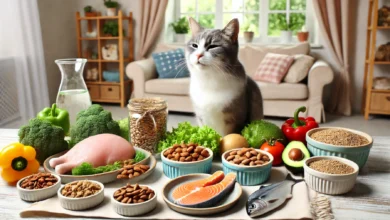The Importance of Fats and Oils in Cat Nutrition
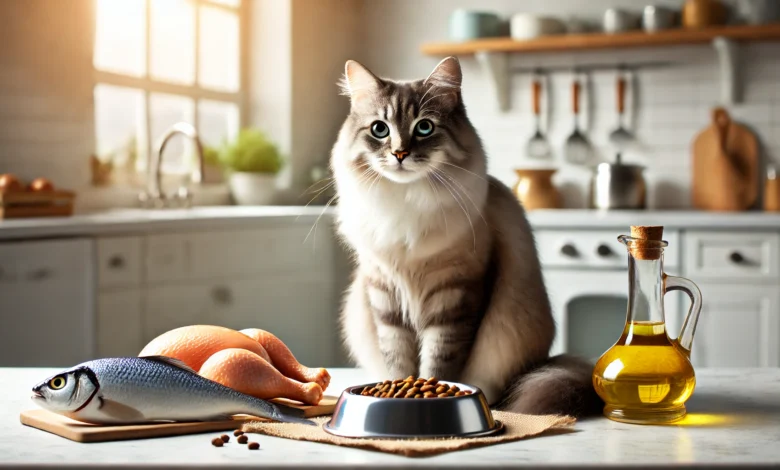
Nutrition is certainly a huge role player when it comes to your cat’s health.
While owners focus most of their attention on vitamins and proteins, fats and oils are just as crucial.
Fats are responsible for giving your feline friend energy, nurturing its skin, taking care of its coat, and even supporting brain function.
It is important to understand the role of fats and oils in the nutrition of your cat; this will help in making the best choice regarding its diet.
The objective of this article is to discuss the importance of fats and oils, showing how these two elements impact your cat’s life in general.
Fats and oils are not just sources of energy in your cat’s diet, but an integral part of it, too—from keeping their coat shiny to keeping them active.
But what exactly are these fats and oils, and where do they originate?
Let’s look at it in detail.
Table of Contents
What Are Fats and Oils in Cat Food?
Fats and oils are two of the most important macronutrients in cat food, offering much more than just a source of energy.
They act as transporters of fat-soluble vitamins A, D, E, and K throughout your cat’s body for proper absorption.
While the terms ‘fats’ and ‘oils’ are often used synonymously, they do have some subtle differences based on structure and form.
Fats are generally solid at room temperature, while oils are typically liquid.
Both are critical to the overall well-being of your cat.
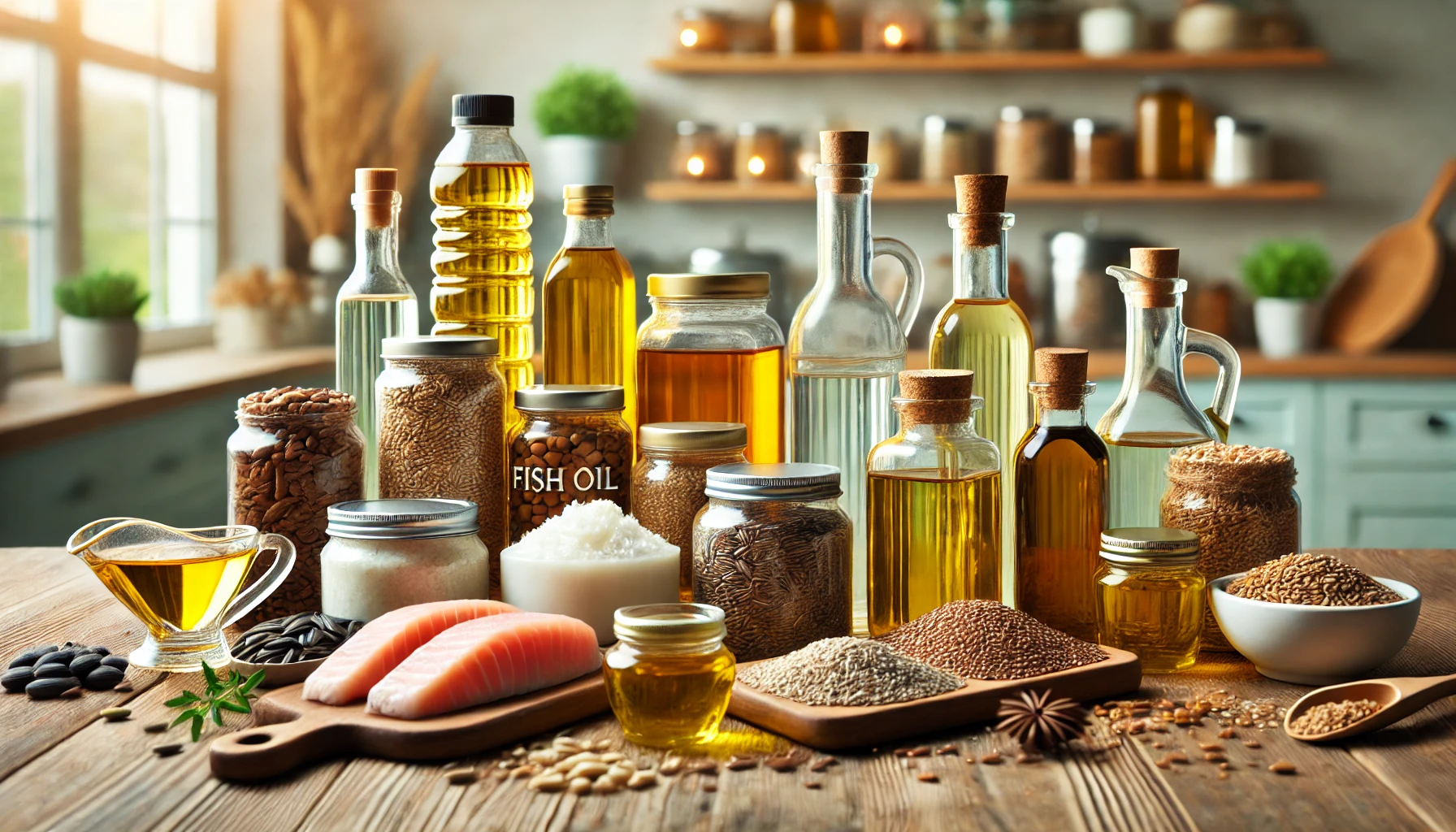
Types of Fats and Oils Available in Cat Food
When you read the label of a cat food package, you are likely to see terms like ‘animal fat’ or ‘fish oil.’ These are some of the major sources of both fats and oils in commercially prepared cat foods.
Animal fats typically come from chicken, beef, or pork, while fish oil contains a high level of Omega-3 fatty acids, known for their anti-inflammatory effects.
- Animal Fats: Animal fats are commonly found in both wet and dry cat food. They provide essential fatty acids that help maintain your cat’s energy levels.
- Fish Oils: Fish oils contribute to the improvement of your cat’s skin, coat, and brain function. They are also a rich source of Omega-3 fatty acids, which may reduce inflammation.
- Plant-Based Oils: Although less common, some plant-based oils, such as sunflower or flaxseed oil, are used in cat foods. However, cats primarily derive their fat requirements from animal-based sources.
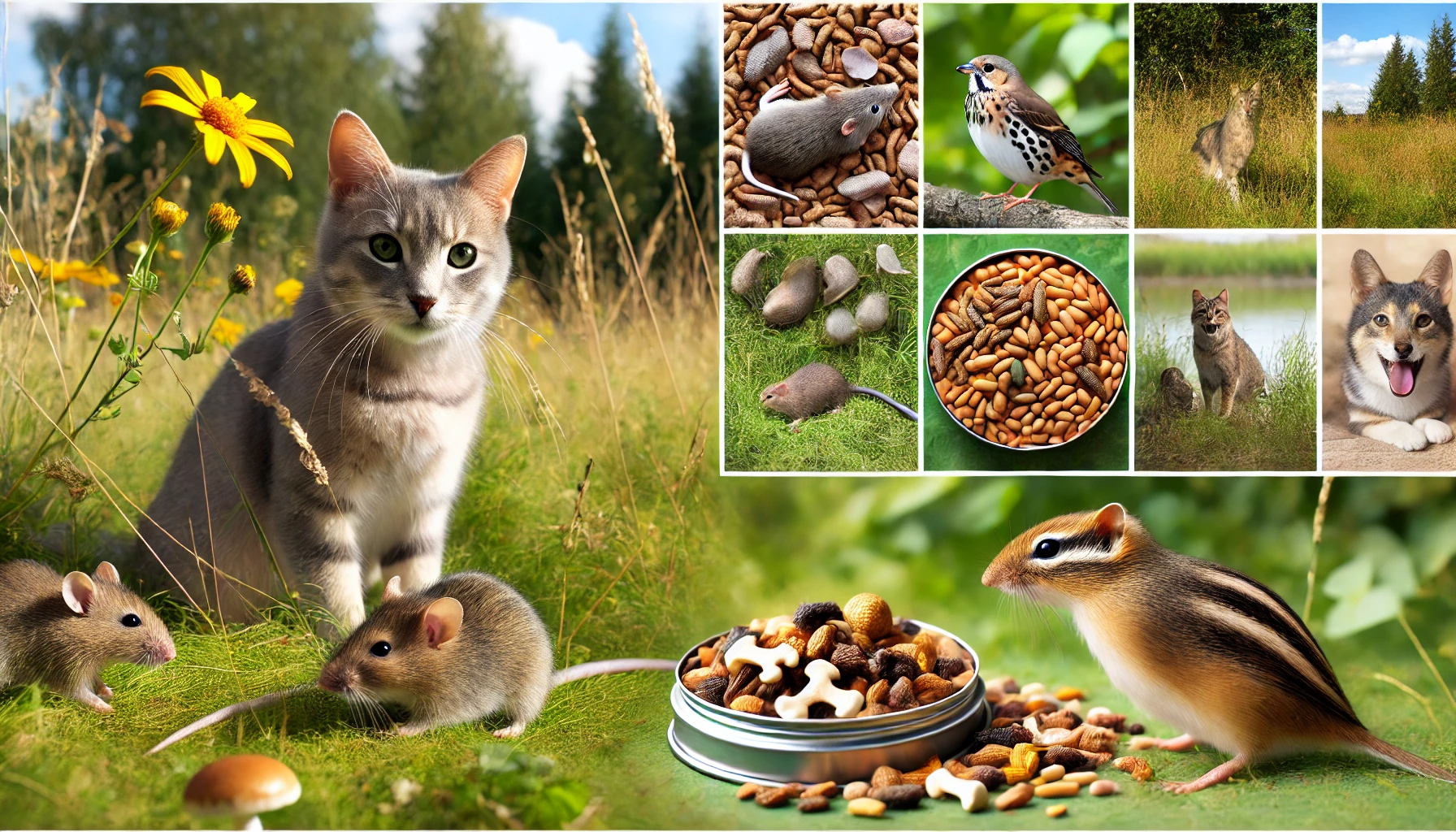
Natural Sources of Fats in a Cat’s Diet
In the wild, cats get their fat from the small rodents or birds they hunt; these animals provide all the saturated and unsaturated fats in their natural form.
For domesticated cats, this is emulated by a mixture of animal by-products and added oils in commercial cat food.
Knowing the natural sources of fats can better equip you with the skills to select the right kinds of cat food for your feline friend.
Look for foods that closely mimic the balance of fats found in a wild cat’s diet.
Fats and oils are vital macronutrients that support your cat’s overall health, transporting fat-soluble vitamins throughout the body.
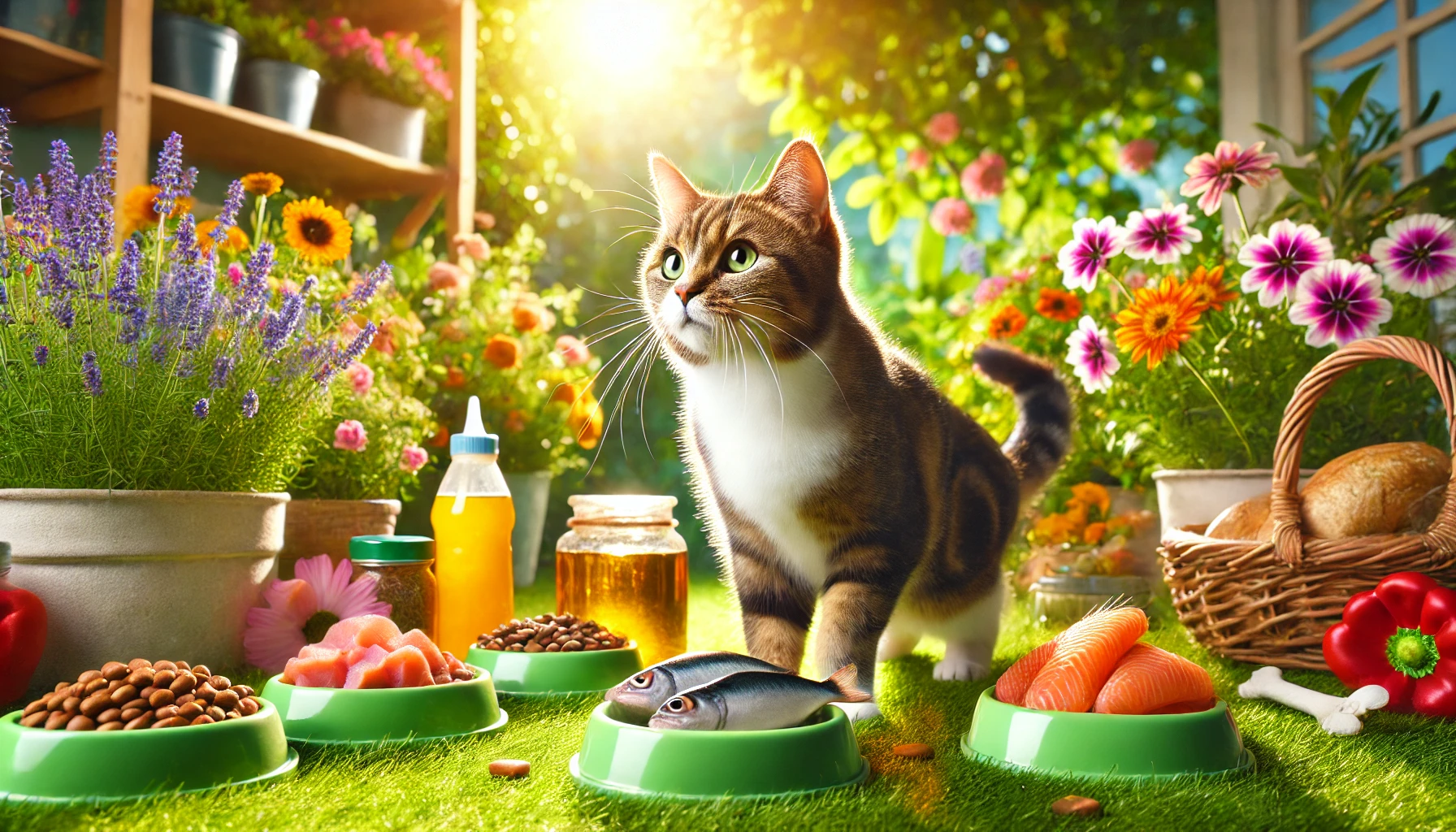
The Role of Fats and Oils in the Health of a Cat
Fats and oils are major sources of energy, but they also play a crucial role in various functions within the body in maintaining the health of your cat.
These macronutrients help maintain glossy fur, support brain development, and promote normal skin health.
The absence of adequate amounts of fats and oils in a cat’s diet can lead to health issues such as dry skin, dull fur, and a loss of energy.
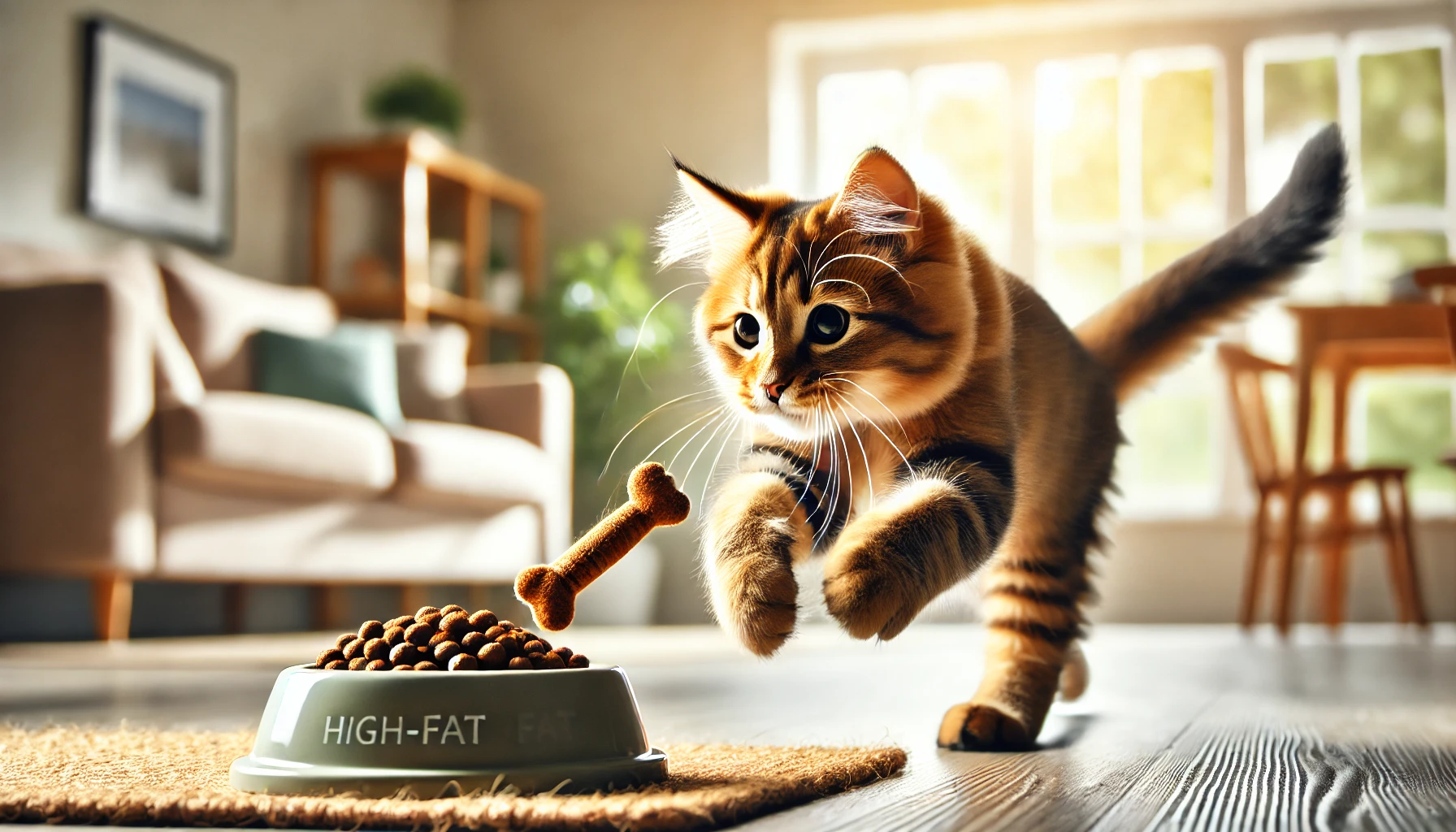
Fats as a Source of Energy in Cats
Cats are obligate carnivores, meaning they rely mostly on meat for their nutritional requirements.
Compared to proteins and carbohydrates, fats contain more than twice as much energy.
Therefore, they are an essential part of your cat’s diet.
A diet high in fats allows your cat to live an active life by providing the energy needed for playing, hunting, or staying alert.
When selecting cat food, ensure it contains healthy animal-based fats to meet your pet’s energy needs.
- Energy-Dense: Fats contain approximately 9 calories per gram, making them efficient energy sources for cats.
- Helps Maintain Weight: An adequate amount of fat intake helps maintain a healthy body weight, particularly for active cats.
- Long-Lasting Energy: Unlike carbohydrates, which provide short-term bursts of energy, fats provide long-lasting energy throughout the day.
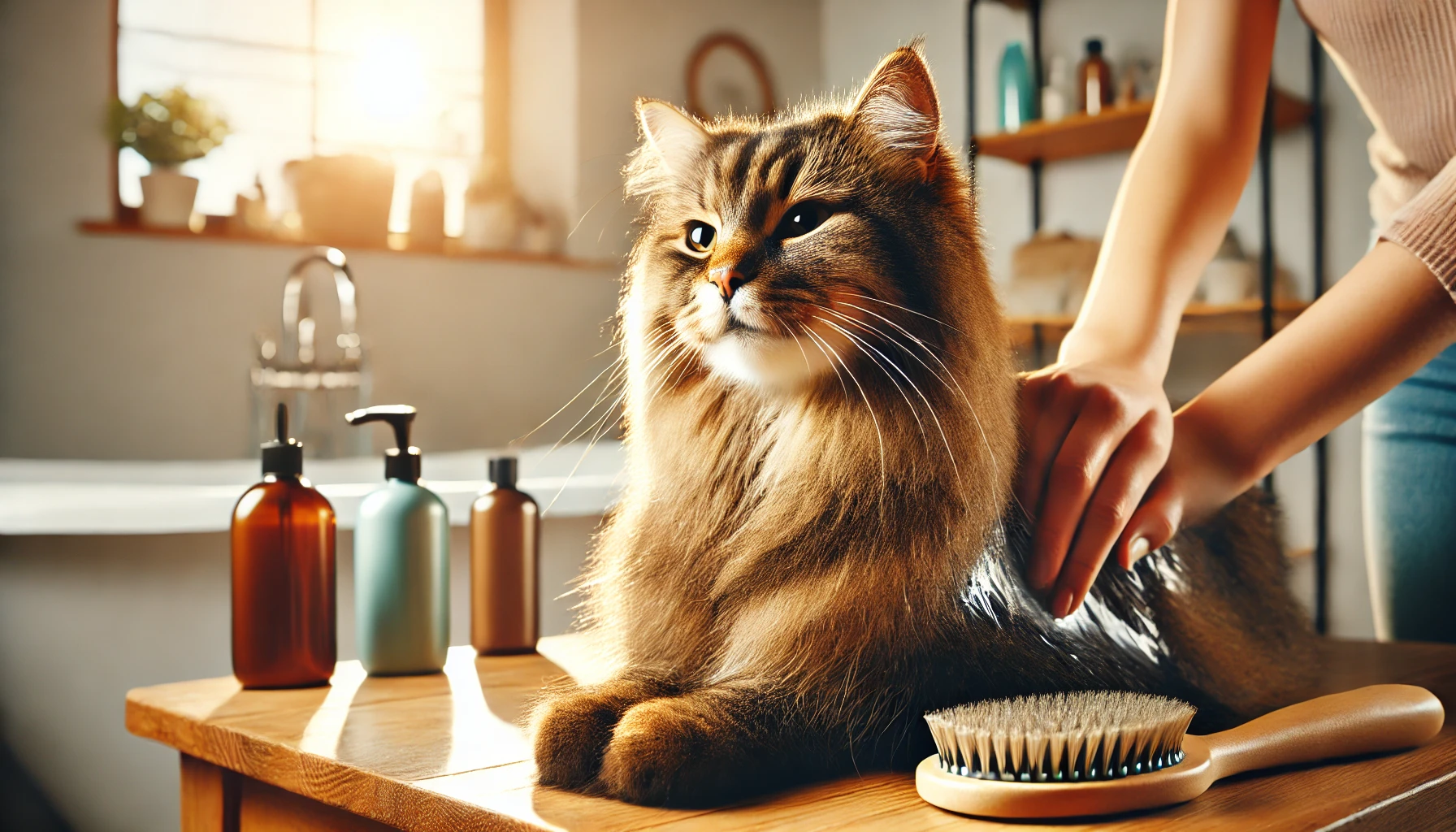
How Fats Contribute to Healthy Skin and Coat
Healthy fats, especially Omega-3 and Omega-6 fatty acids, are essential for your cat’s skin and coat.
These fatty acids add moisture to the skin, reducing flakiness and irritation.
A diet rich in healthy fats will give your cat a shiny, smooth coat, indicating overall good health.
- Prevents Dry Skin: Omega-6 fatty acids help your cat retain moisture in their skin, preventing dryness and irritation.
- Improves Coat Shine: Omega-3 fatty acids contribute to a shiny, soft coat, which is a visible sign of a healthy cat.
- Reduces Shedding: Proper fat intake reduces excessive shedding and helps keep your cat’s fur healthy and manageable.
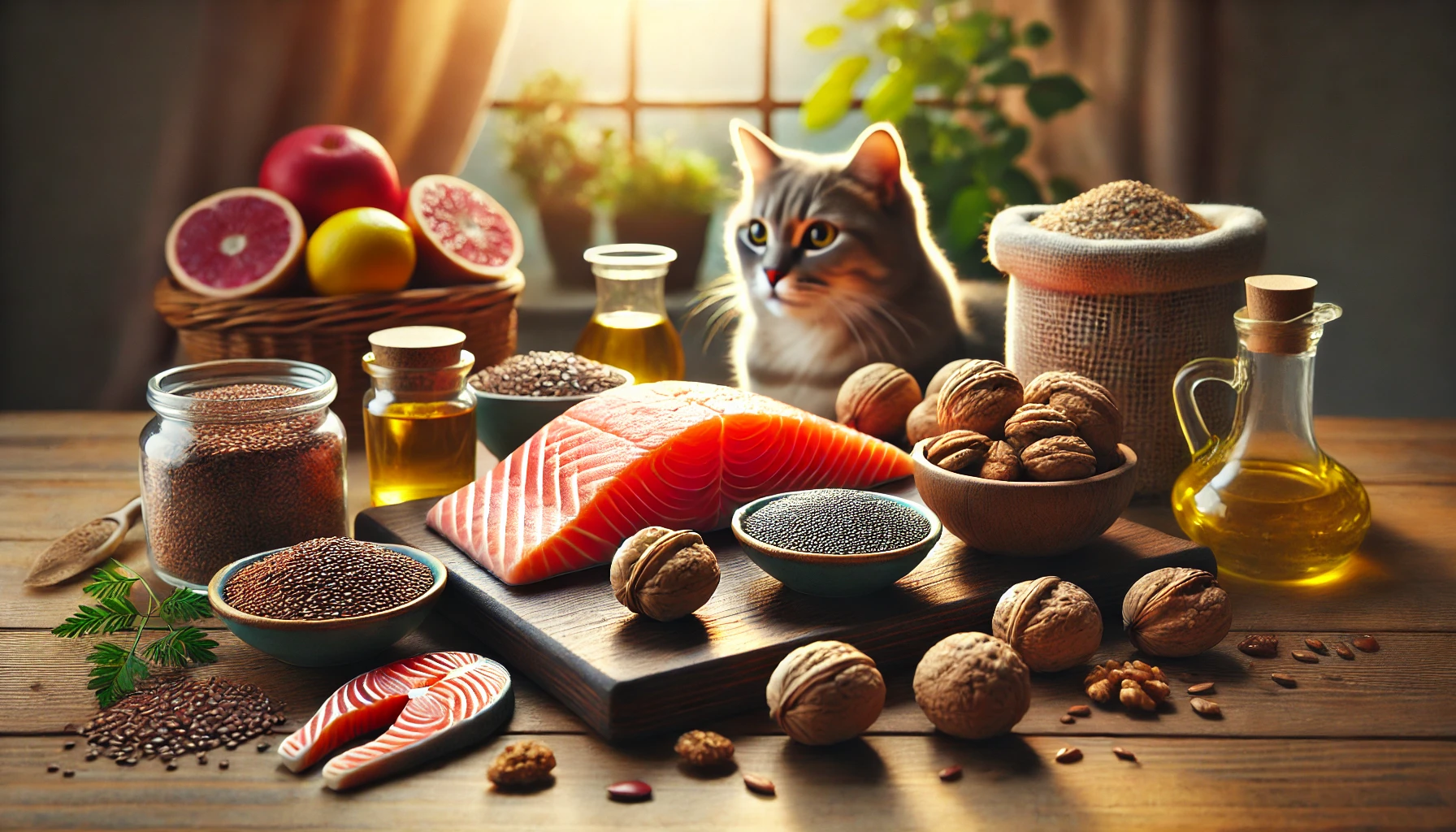
The Significance of Essential Fatty Acids
Cats cannot synthesize certain essential fatty acids on their own, so it is crucial to provide them through their diet.
Linoleic acid (Omega-6) and alpha-linolenic acid (Omega-3) are particularly important for your cat.
These fatty acids help with cell function, reduce inflammation, and strengthen the immune system.
They also have anti-inflammatory properties, which can benefit cats with allergies or joint problems.
- Immune Health: Essential fatty acids strengthen your cat’s immune response, helping to prevent infections and diseases.
- Reduces Inflammation: Omega-3 fatty acids have anti-inflammatory effects, which can benefit cats with chronic conditions such as arthritis.
- Promotes Cell Function: Fats contribute to the structure and function of cell membranes, supporting normal cellular activity.
Fats and oils are essential for energy, maintaining glossy fur, and supporting brain development in cats.
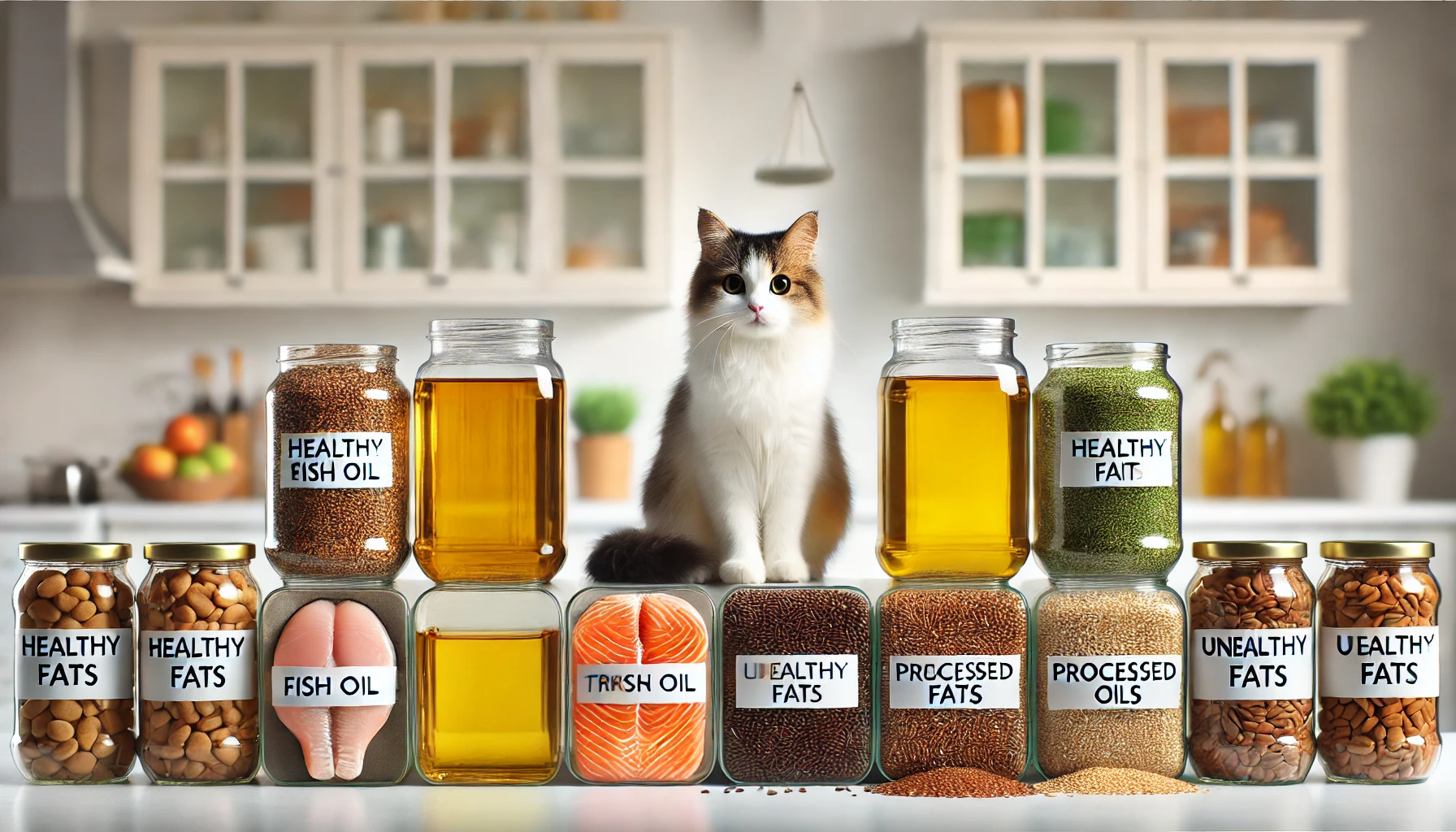
Healthy Fats vs. Unhealthy Fats for Cats
Not all fats are created equal, and there’s a big difference between healthy and unhealthy ones, especially when it comes to your cat.
Adding the right type of fats and oils to your cat’s food will have huge impacts on their health, while adding the wrong types can cause obesity, poor coat quality, or even heart diseases.
Knowing which fats to feed and which ones to avoid is key to keeping your cat healthy.
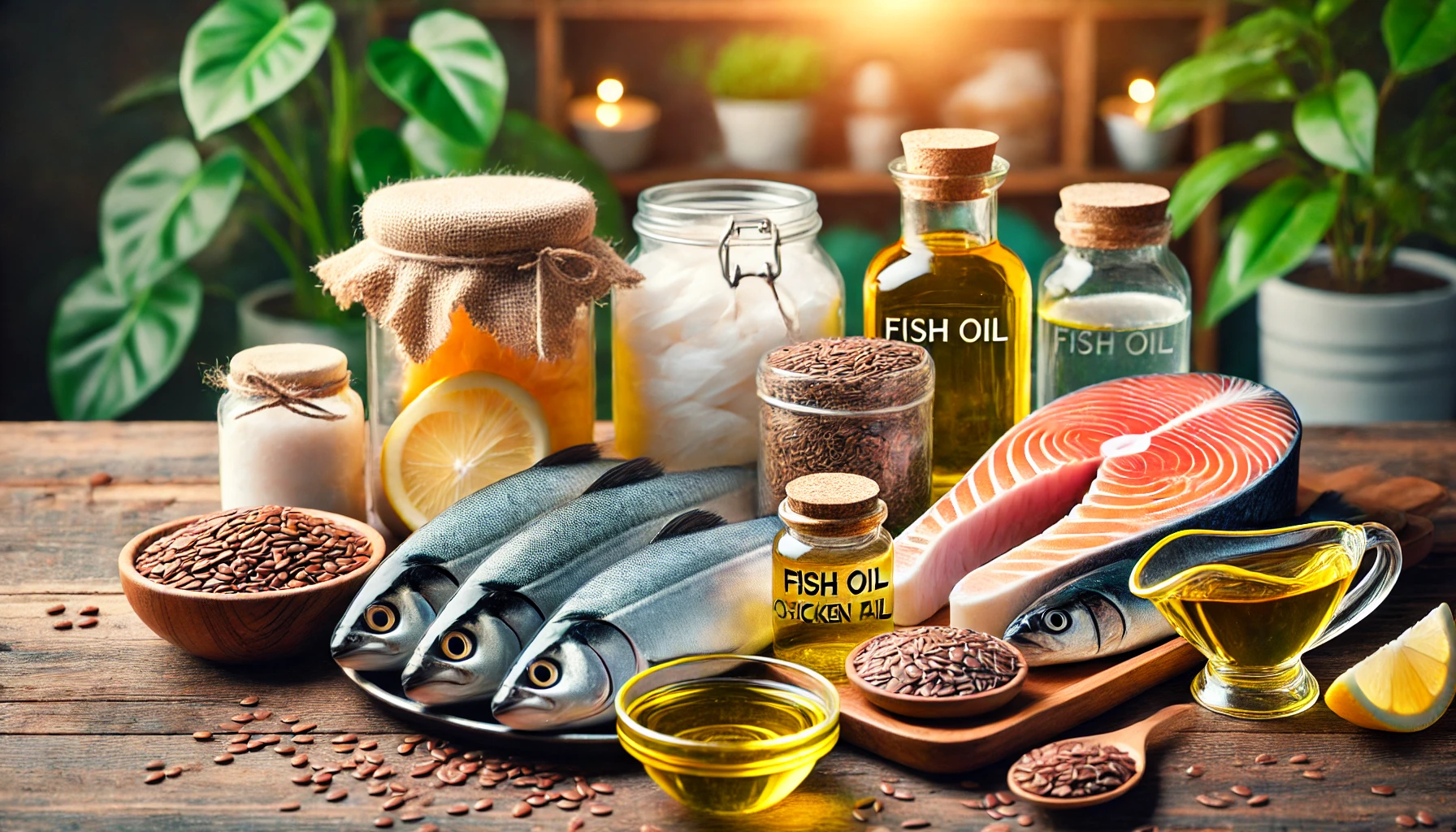
Understanding Healthy Fat Sources
Healthy fats for cats normally come from animal sources, such as chicken fat, fish oil, and even some plant-based oils like flaxseed oil.
These contain essential fatty acids, mainly Omega-3 and Omega-6, which offer remarkable health benefits, from improving skin and coat conditions to reducing inflammation and boosting brain function.
When choosing cat food, look for ingredients like fish oil or chicken fat, which are easily digestible and beneficial for your cat.
- Chicken Fat: Rich in Omega-6 fatty acids, which promote healthy skin and a shiny coat.
- Fish Oil: A great source of Omega-3 fatty acids, which support brain function and may reduce inflammation.
- Flaxseed Oil: A plant-derived oil that still provides enough Omega-3 fatty acids beneficial for cats.
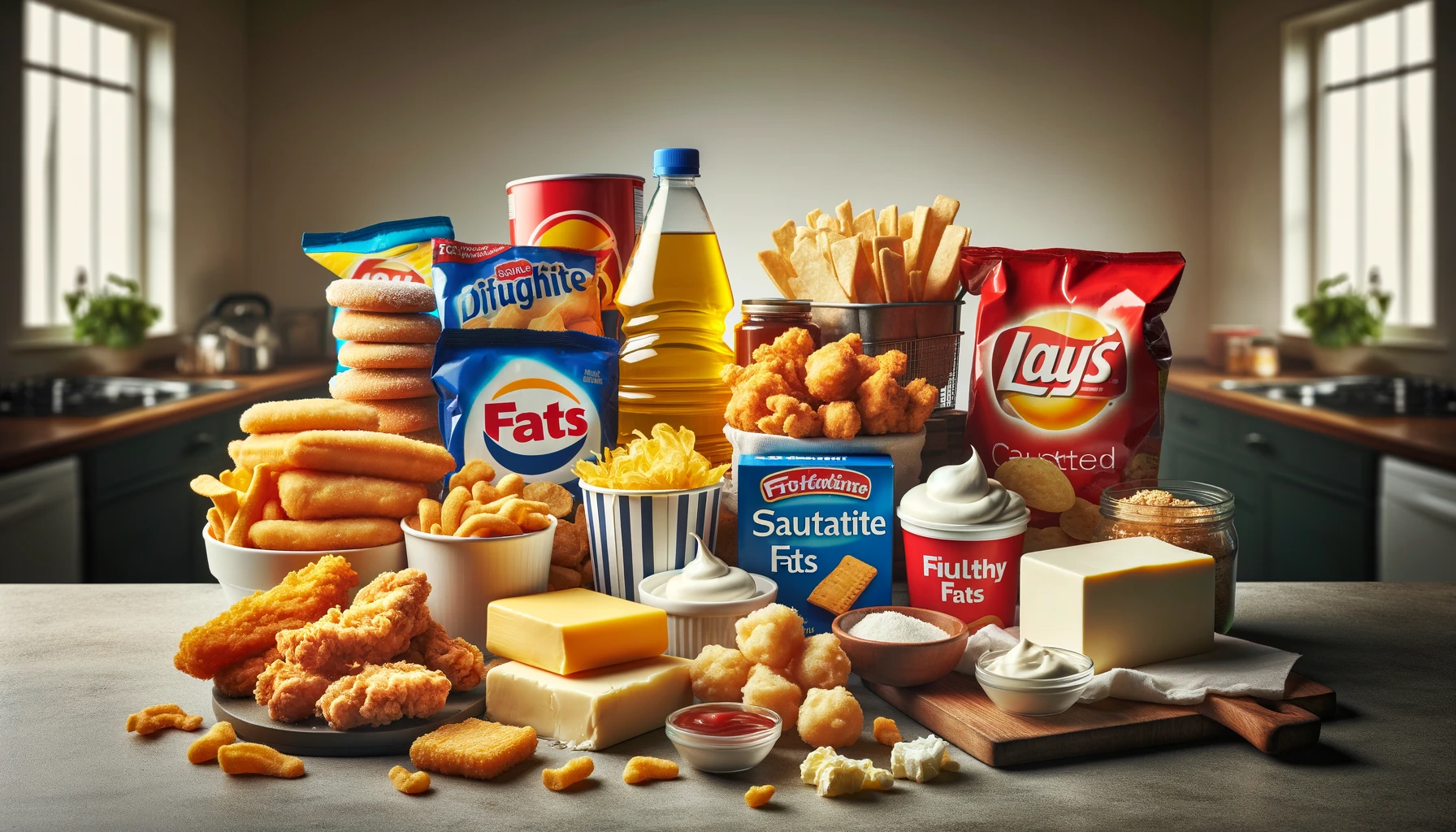
Risks of Trans Fats and Saturated Fats
Unhealthy fats, such as trans fats and excessive amounts of saturated fats, should be avoided in your cat’s diet.
These fats are often found in low-quality, highly processed food and can contribute to health issues like obesity, heart disease, and poor digestion.
Trans fats are particularly harmful as they increase the risks of inflammation and damage your cat’s cardiovascular health.
Always read the labels of commercial cat food to avoid products containing hydrogenated or partially hydrogenated oils.
- Trans Fats: Found in processed foods, trans fats cause inflammation and increase the risk of heart disease.
- Excessive Saturated Fats: While small amounts are tolerable, too much saturated fat can lead to obesity and poor coat quality.
- Hydrogenated Oils: Often found in low-quality cat foods, these oils should be avoided due to their negative impact on health.

How to Balance Omega-3 and Omega-6 in Cat Food
Maintaining the right balance of Omega-3 and Omega-6 fatty acids is essential for your cat’s well-being.
Although both are important, an excess of Omega-6 compared to Omega-3 can lead to inflammation.
Most commercially available cat foods contain more Omega-6 due to the use of chicken fat and vegetable oils, so it’s important to ensure your cat gets enough Omega-3, typically from fish oil or supplements, to balance it out.
A proper ratio of these fatty acids supports skin health, reduces the risk of inflammation, and promotes a healthy immune system.
- Balanced Fat Ratio: Look for cat food with a proper balance of Omega-3 and Omega-6 to reduce inflammation and support overall health.
- Omega-3 Supplements: If your cat’s food lacks Omega-3, consider adding supplements to their diet.
- Check Labels: Always check food labels to ensure both Omega-3 and Omega-6 fatty acids are present.
Choosing the right type of fats is critical for your cat’s health. Avoid trans fats and excessive saturated fats found in low-quality cat food.
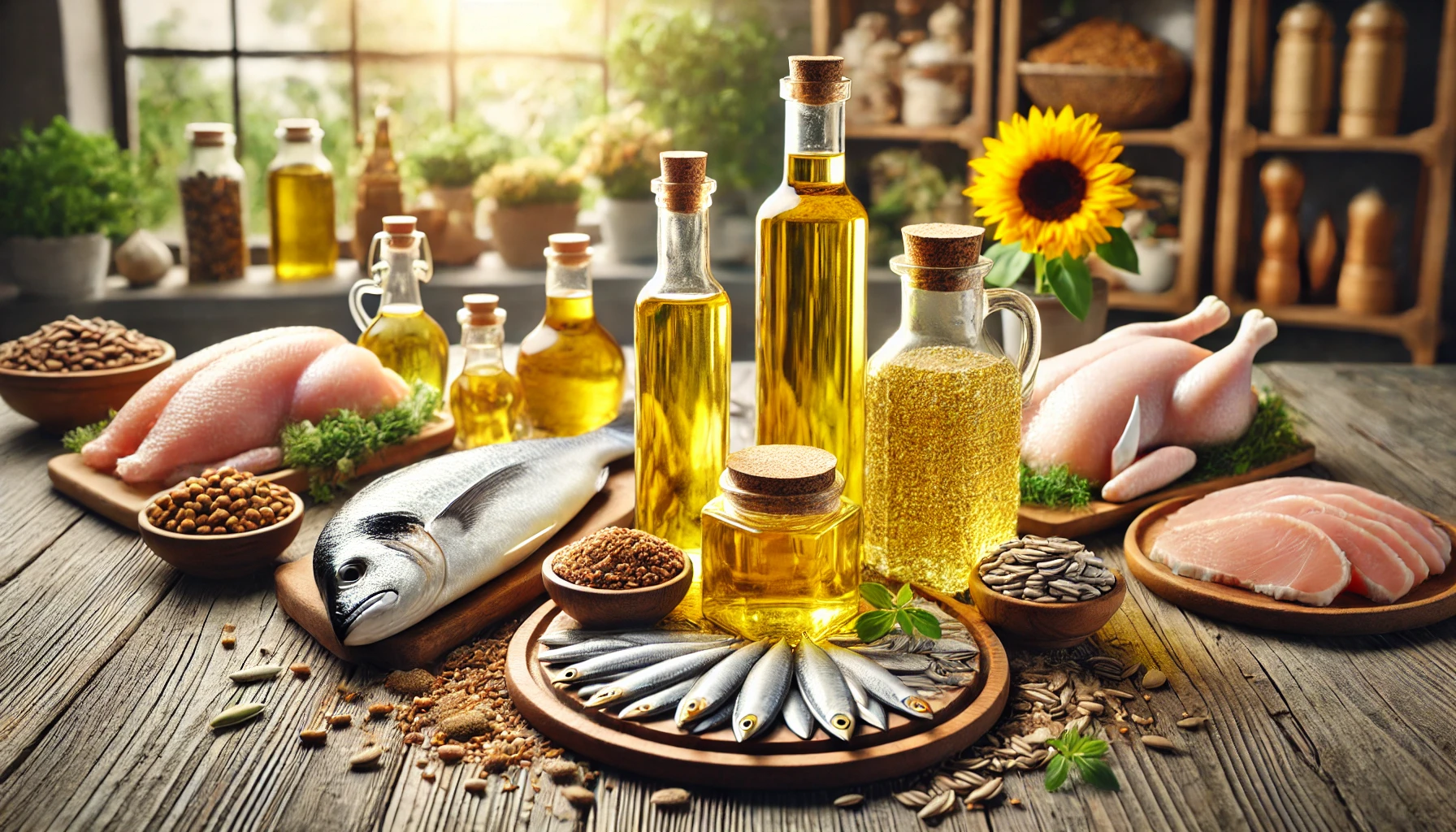
Common Sources of Oils Utilized in Commercial Cat Food
Quality can vary considerably among the fats and oils in commercial cat foods, so it is essential to understand common sources of these ingredients if you want the best option for your cat.
Oils and fats are blended into cat food to provide essential nutrition, add palatability, and improve texture.
Some sources are better than others due to the type of nutrients they provide and how they are processed.
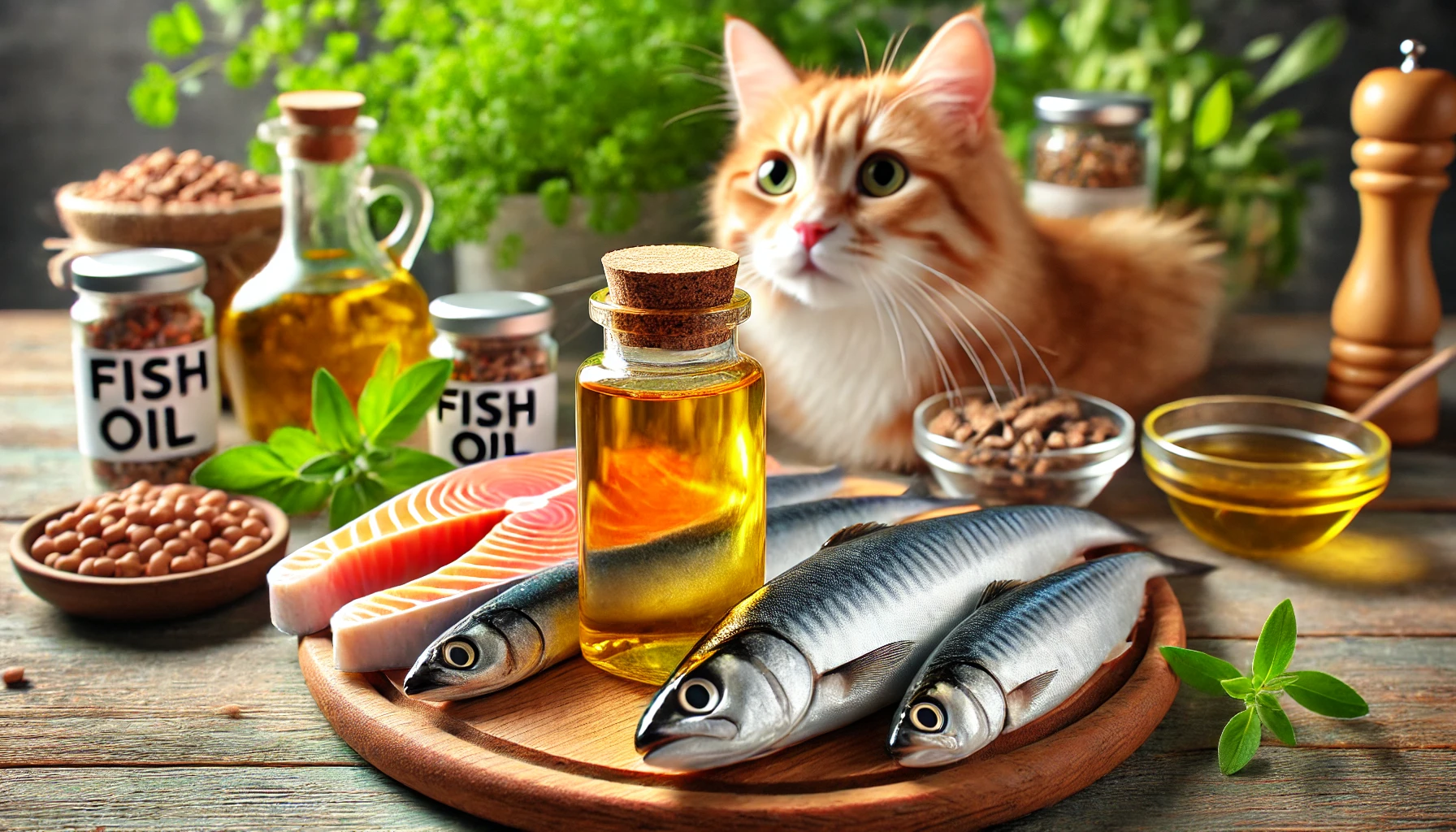
Fish Oil and Its Benefits to Cats
Among the popular sources of Omega-3 fatty acids in cat food, fish oil is a common ingredient.
It is typically extracted from fish like salmon, mackerel, and sardines.
These fish oils are rich in DHA and EPA, which are vital for maintaining brain health, reducing inflammation, and promoting healthy skin and a shiny coat.
Fish oil is frequently added to cat food, especially for senior cats or those with joint issues, to enhance its nutritional value.
- Brain Function: DHA in fish oil supports brain development and cognitive function, especially in kittens and older cats.
- Anti-Inflammatory Effects: EPA helps reduce inflammation and can provide relief to cats with arthritis or other inflammatory conditions.
- Healthy Coat: Omega-3 fatty acids contribute to a shiny and soft coat, making fish oil an important ingredient for skin and coat health.
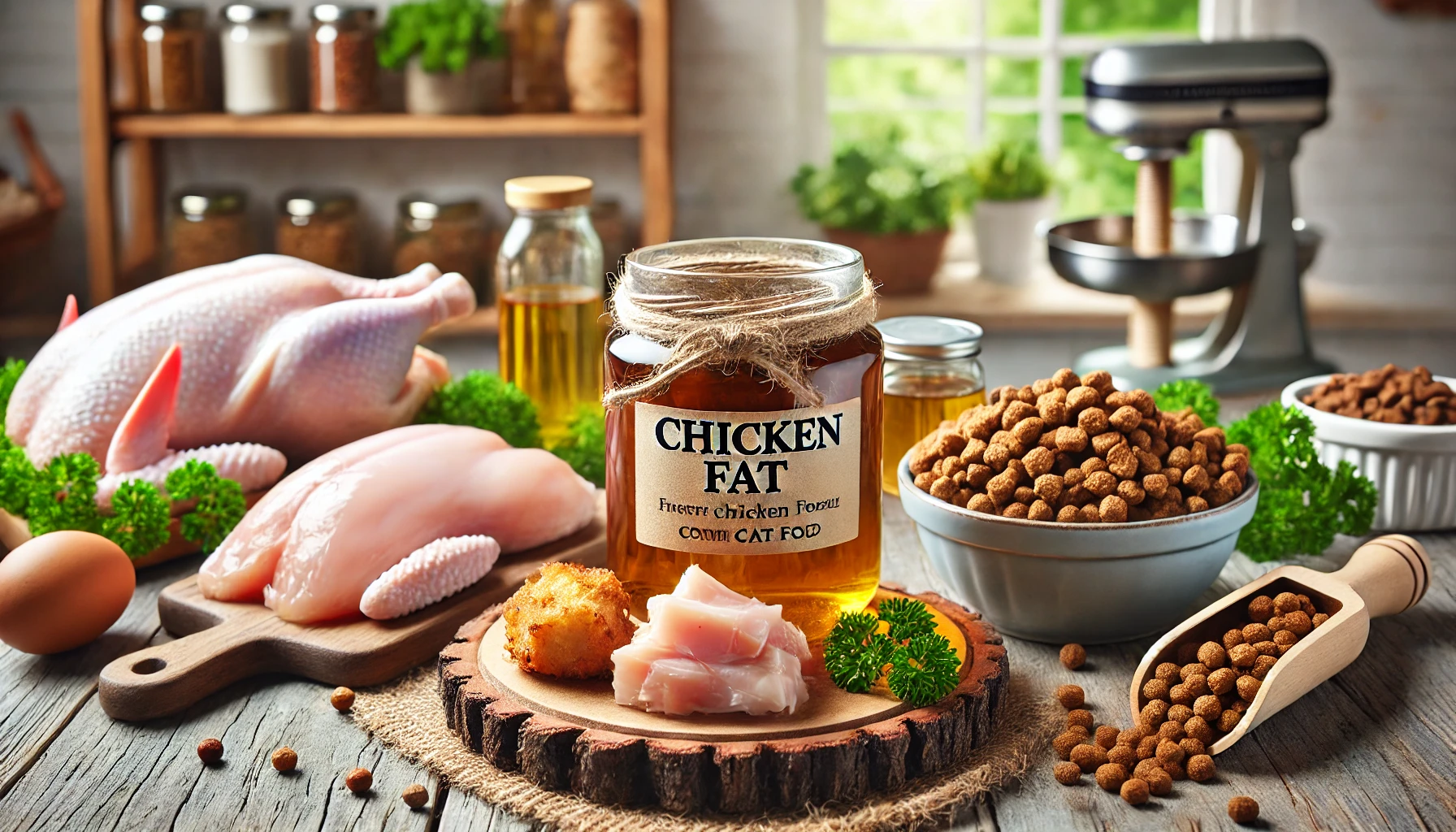
Chicken Fat: A Common Ingredient in Commercial Cat Food
Chicken fat is another common source of fat used in commercial cat food.
It is a concentrated source of Omega-6 fatty acids, which help boost energy levels.
Chicken fat is also rich in linoleic acid, which is essential for maintaining healthy skin and a shiny coat.
Additionally, chicken fat enhances the flavor of cat food, making it more appealing to picky eaters.
- Flavor Enhancer: Chicken fat improves the aroma and taste of cat food, making it more palatable.
- Rich in Omega-6: Chicken fat is a rich source of linoleic acid, which supports healthy skin and coat.
- Energy Source: This fat is energy-dense, helping active cats meet their daily energy requirements.
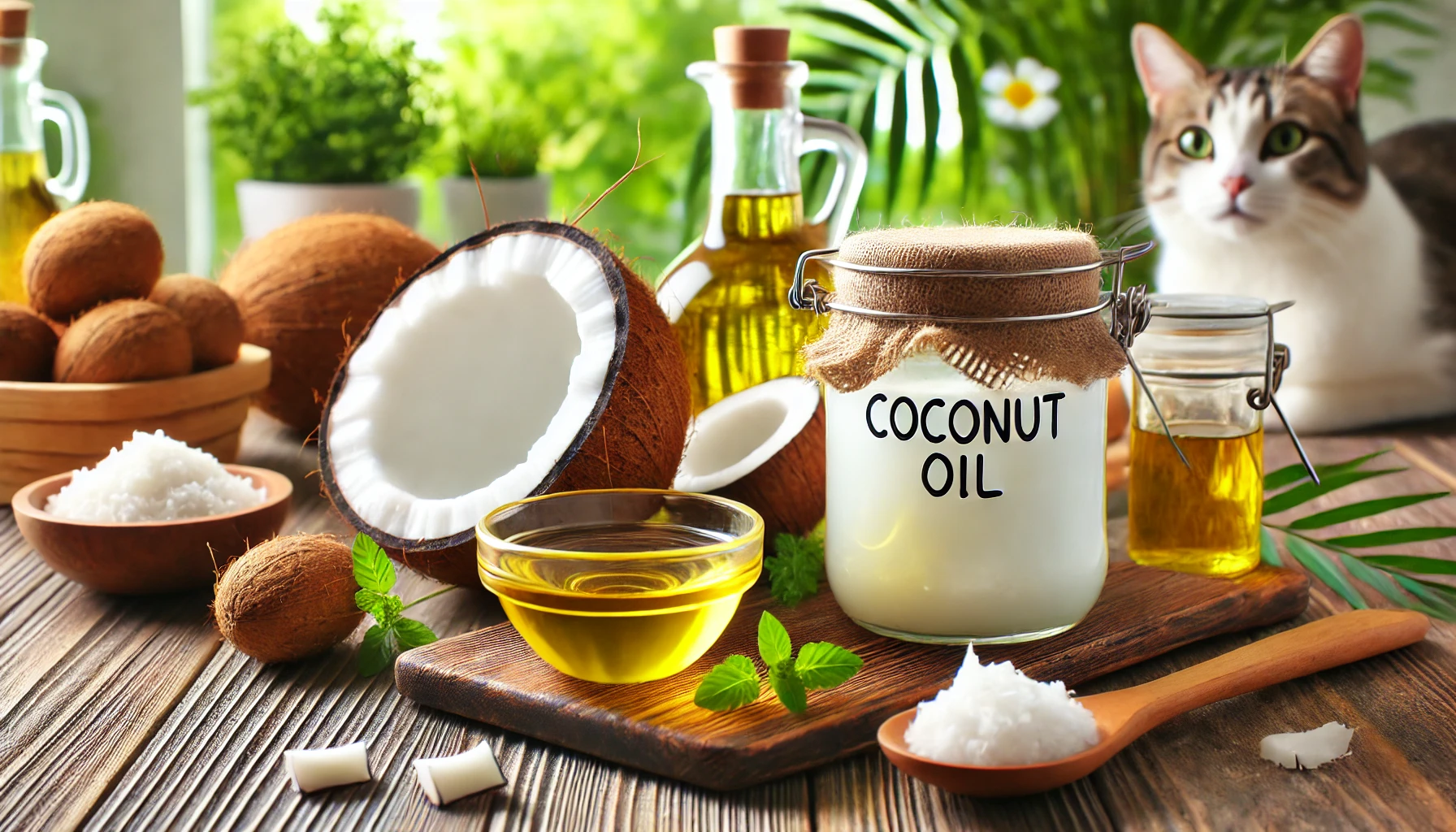
Coconut Oil and Its Use in Cat Diets: To Use or Not to Use
Coconut oil has gained popularity in pet foods, but its use in feline diets remains controversial.
Rich in saturated fats, coconut oil is also a source of medium-chain triglycerides (MCTs), which can provide quick energy and aid digestion.
However, since cats are obligate carnivores, they do not benefit from coconut oil as much as they do from animal-based fats like fish oil or chicken fat.
Some veterinarians advise against its excessive use in cat diets due to the high levels of saturated fat.
- Quick Energy Source: MCTs in coconut oil provide a readily available energy source, though they may not be as beneficial for cats as animal fats.
- Supports Digestion: Some studies suggest coconut oil may improve digestion and reduce hairballs, but more research is needed.
- High in Saturated Fats: Coconut oil is high in saturated fat, which may be undesirable for long-term use in feline diets.
Quality of fats in cat food varies. Always opt for ingredients like fish oil or chicken fat, which are rich in essential fatty acids.
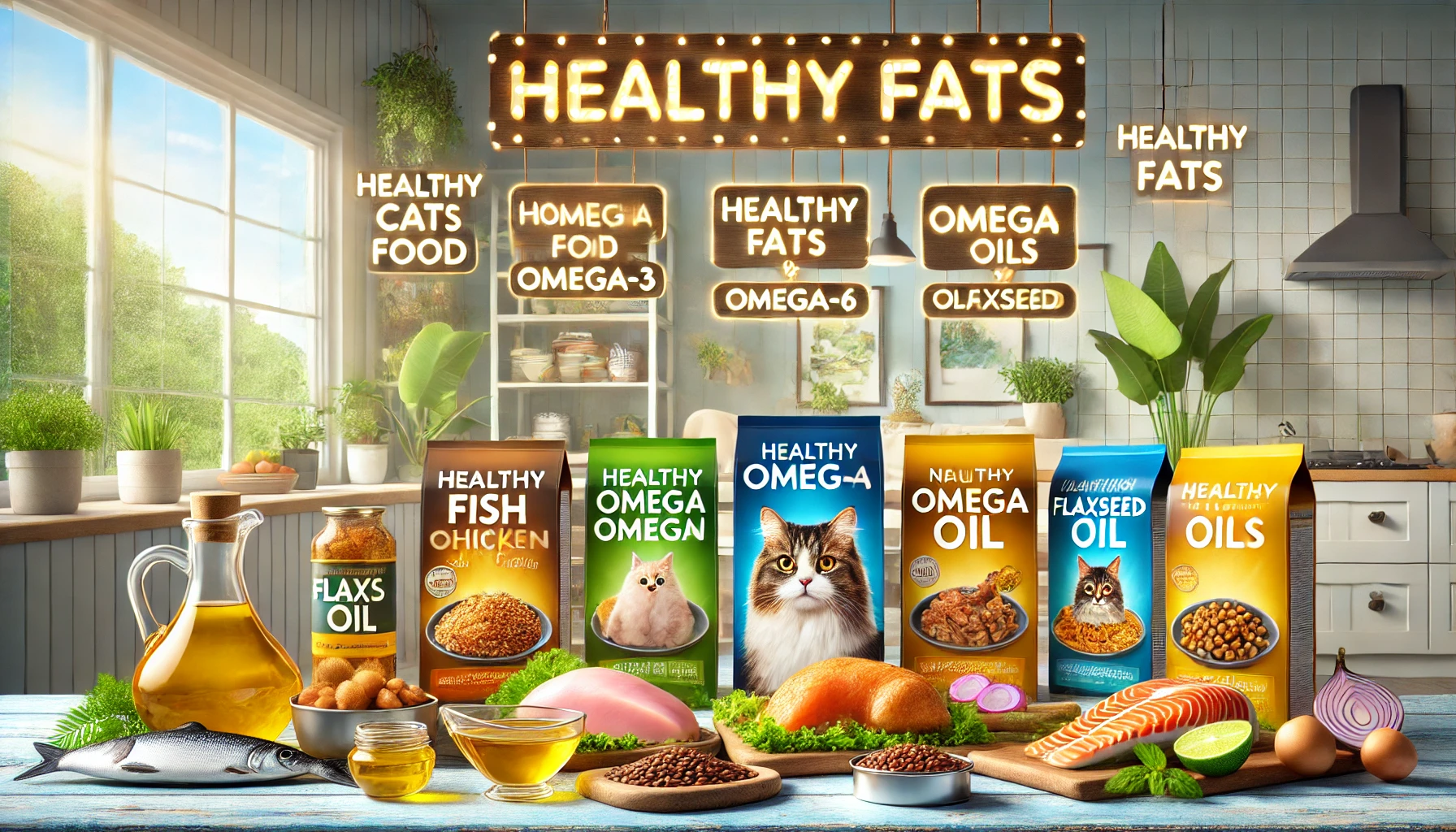
How to Choose Wholesome Fats and Oils-Rich Cat Food
Choosing the right cat food that contains healthy fats and oils will positively contribute to your cat’s overall well-being.
The right amount of fat in your cat’s diet helps with energy levels, enhances skin health, and keeps the coat shiny; this is in addition to supporting brain function.
With so many commercial cat foods available, it can be difficult to determine which ones have the best fat content.
Knowing what to look for in cat food labels and identifying quality sources of fat will make it easier to choose the best option for your cat.
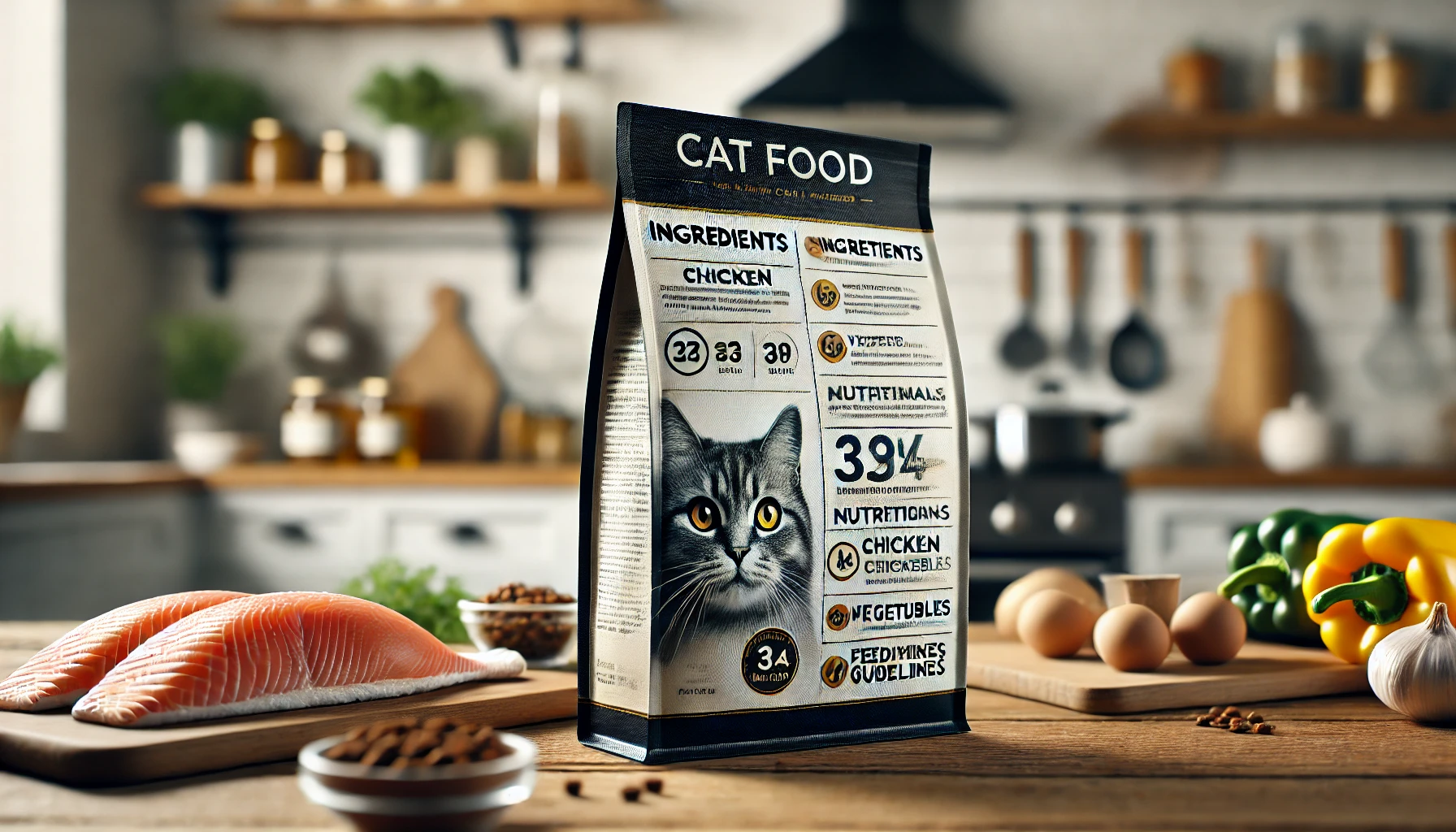
What to Look for in Food Labels
Reading cat food labels is one of the most important ways to determine the fat content and quality of the ingredients.
Look for specific fats like chicken fat, fish oil, or beef tallow, as these provide essential fatty acids, including Omega-3 and Omega-6.
Avoid vague terms such as ‘animal fat’ or ‘meat by-products,’ as these are lower-quality fat sources.
Finally, check the guaranteed analysis for the percentage of fat to ensure the food meets your cat’s nutritional needs.
- Specific Fat Sources: Look for clearly listed fats like chicken fat, fish oil, and beef tallow, which are nutritious and wholesome.
- Avoid Vague Terms: Terms like ‘animal fat’ or ‘meat by-products’ do not specify the source of fat and may indicate lower quality.
- Check the Percentage of Fat: Check the guaranteed analysis to ensure the fat content aligns with your cat’s nutritional needs.
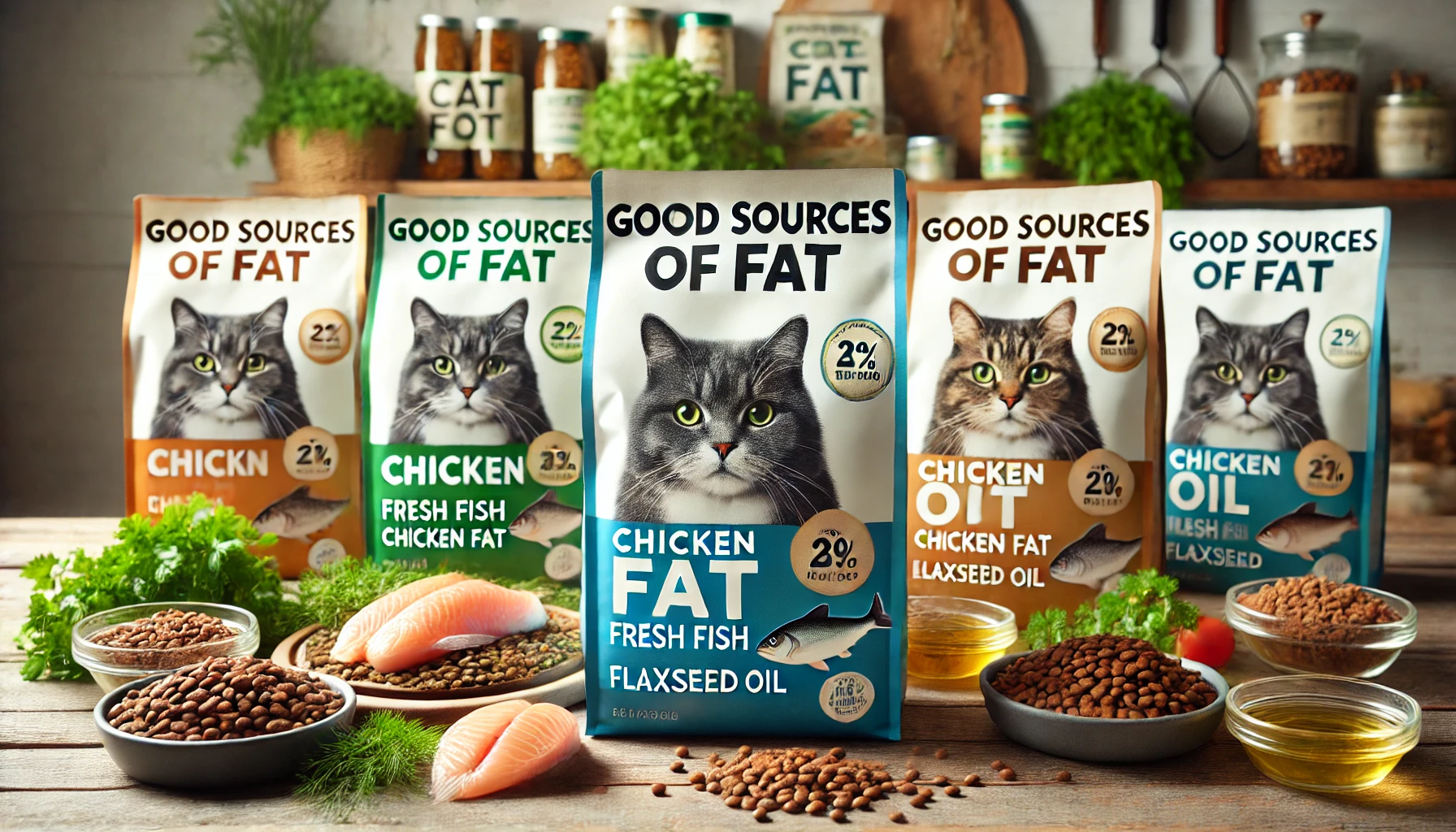
Tips for Identifying Good Sources of Fat in Cat Food
Your cat needs high-quality fats to provide nutrients that will help maintain optimal health.
Look for minimally processed ingredients with a balance of Omega-3 and Omega-6 fatty acids.
Fish oil, chicken fat, and flaxseed oil are examples of good-quality fats that promote skin and coat health, reduce inflammation, and support cognitive function.
Conversely, avoid foods containing hydrogenated oils or rendered fats, as these are often highly processed and may lead to poor health over time.
- Minimally Processed: Opt for cat food with minimally processed fats to retain their nutritional benefits.
- Balanced Omega Fatty Acids: Ensure your cat gets a balanced level of Omega-3 and Omega-6 fatty acids for overall health.
- Avoid Hydrogenated Oils: Processed oils can have long-term negative effects on your cat’s health and should be avoided.
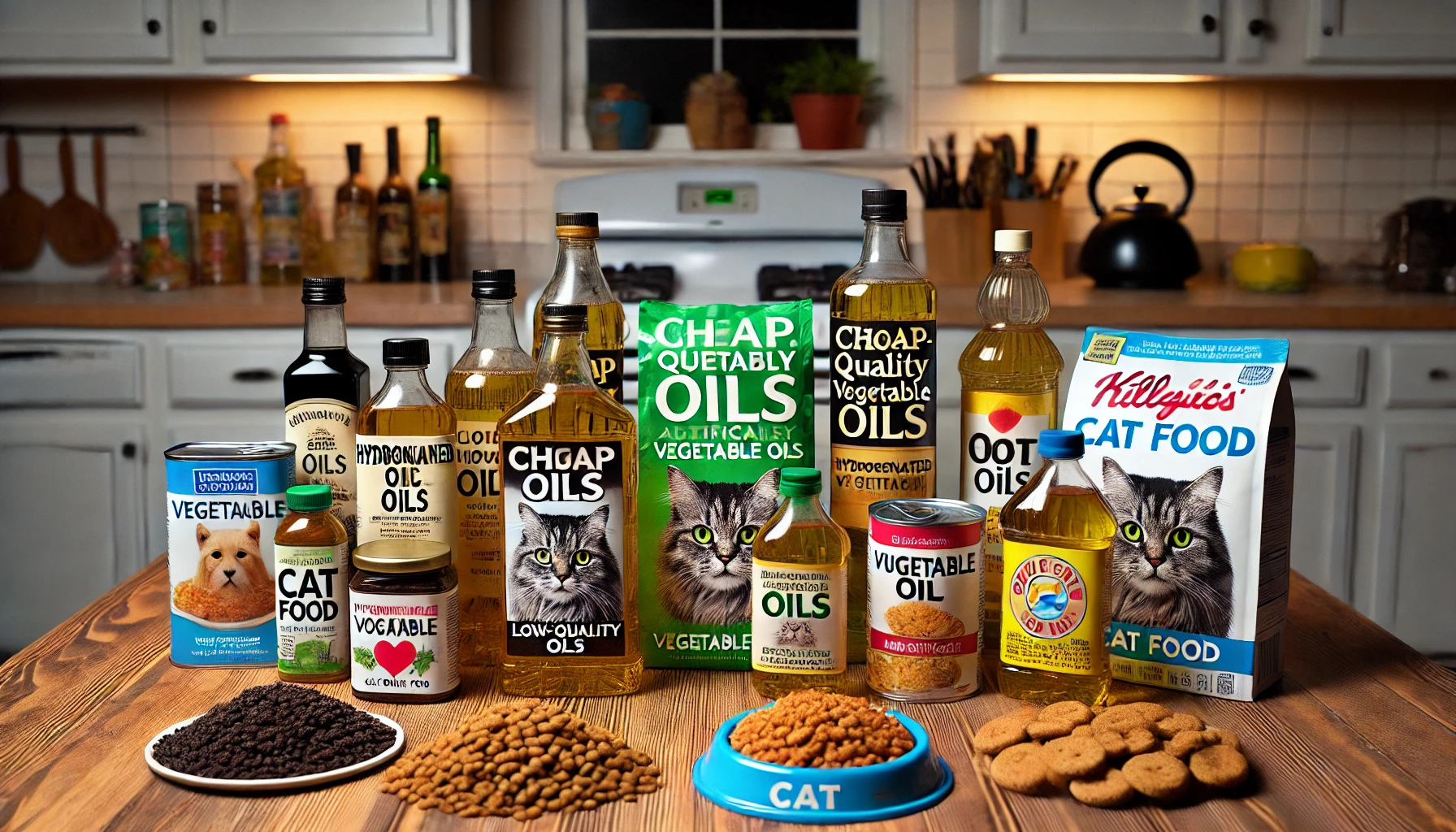
Avoiding Artificial or Low-Quality Oils
Many low-quality commercial cat foods contain artificial or low-quality oils to cut costs, but these can have negative effects on your cat’s health.
Artificial oils, such as hydrogenated or partially hydrogenated oils, can lead to inflammation, obesity, and other health problems.
Low-quality fats are typically found in highly processed foods that use cheap ingredients.
Always opt for cat foods with natural, high-quality fats, and avoid those with artificial additives or fillers.
- Avoid Artificial Oils: Avoid cat foods containing hydrogenated or partially hydrogenated oils, which can lead to health problems.
- Natural Fats: Choose foods made with natural fat sources, like fish oil or chicken fat, which provide essential nutrients.
- Avoid Fillers: Cat foods with fillers or low-quality fats offer little nutritional value and should be avoided.
Look for specific sources like fish oil or chicken fat in cat food labels to ensure your cat receives high-quality fats.
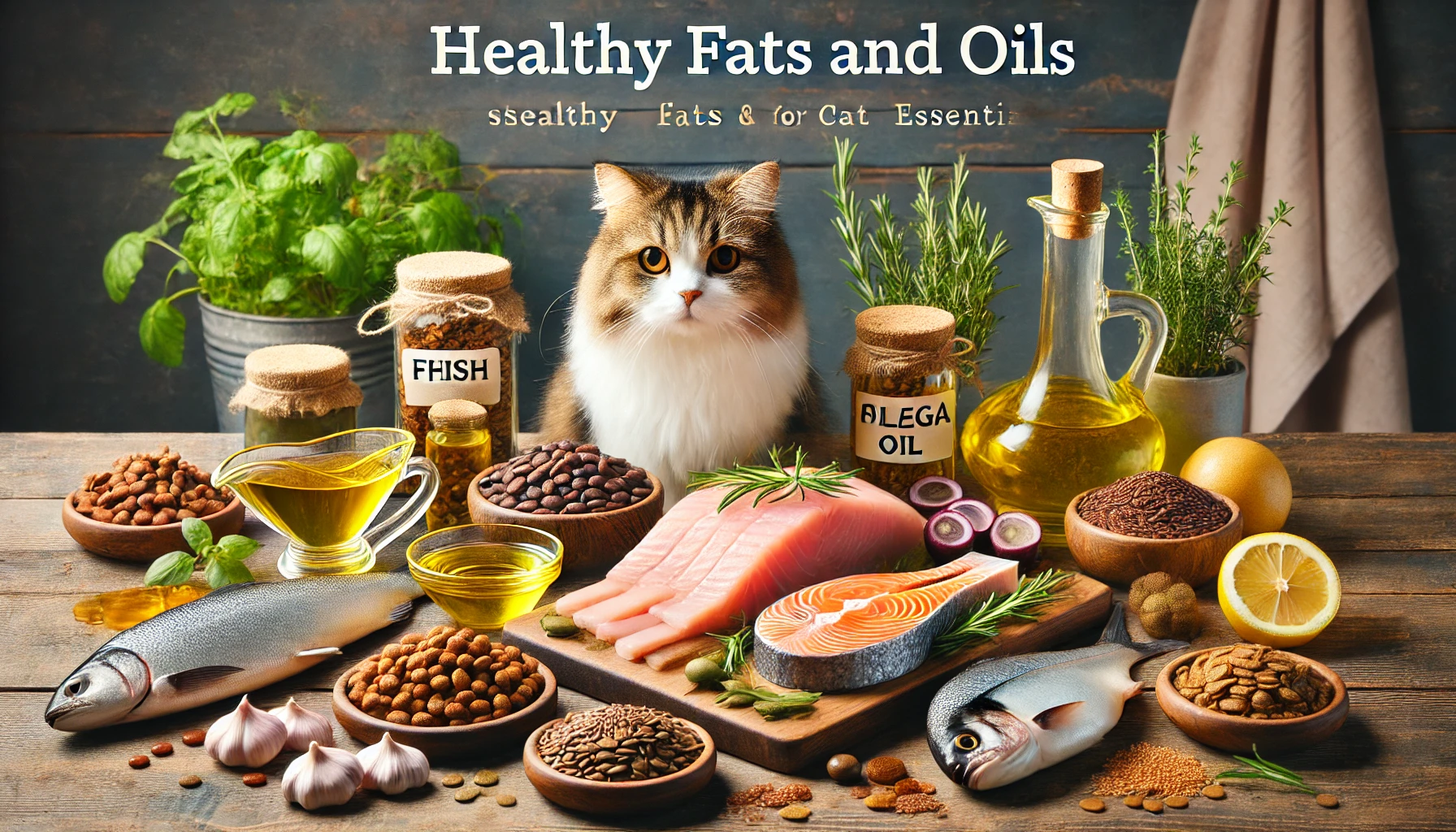
The Importance of Fats and Oils in Cat Nutrition: A Summary
Two of the most important components in a feline’s diet are fats and oils.
These macronutrients are not only a concentrated source of energy, but they also play significant roles in your cat’s skin, coat, and brain health.
As discussed throughout this article, understanding the different types of fats and oils available in cat food and their benefits is key to ensuring your cat leads a long and healthy life.
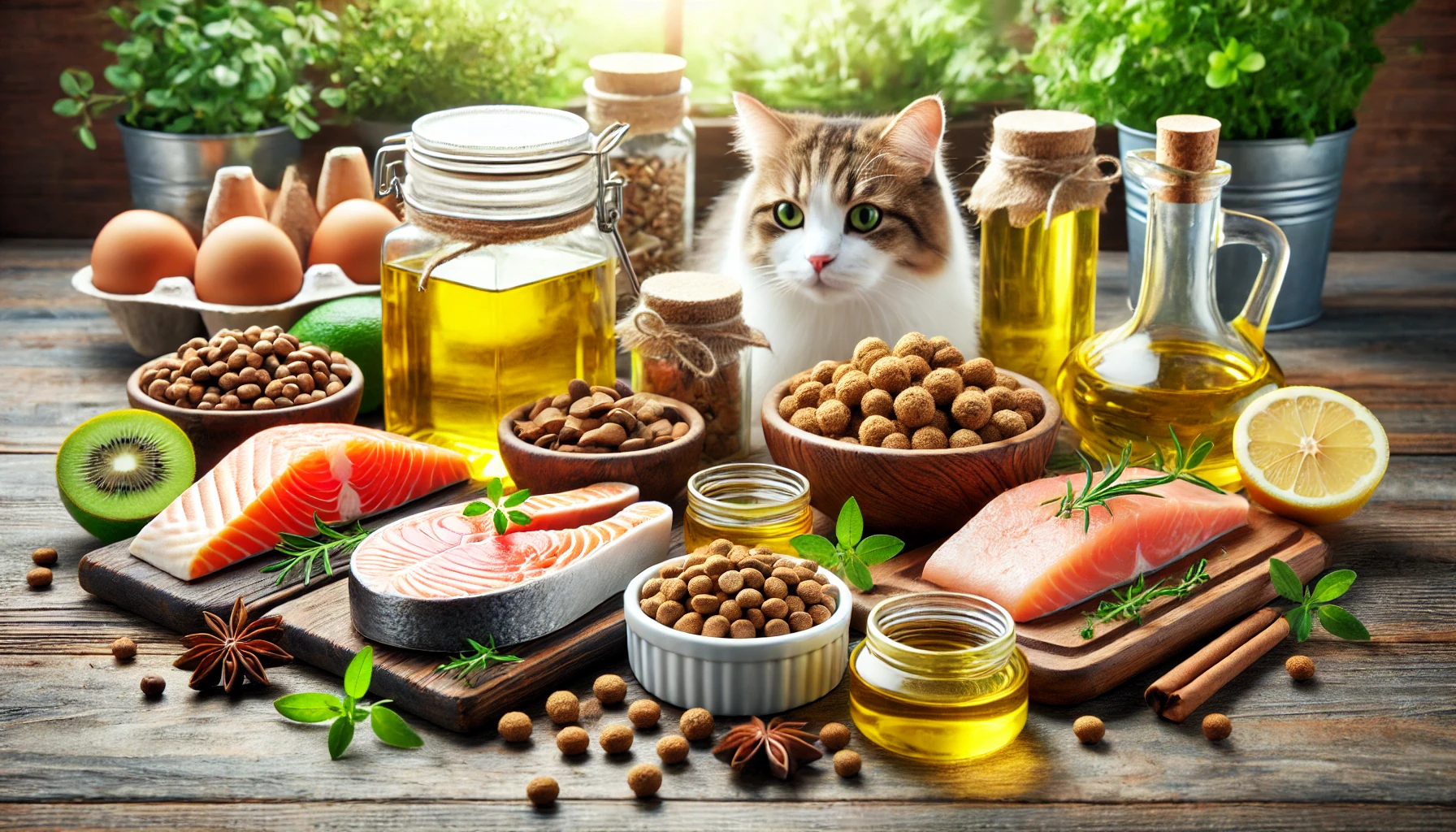
Healthy Fats and Their Usage
Fats and oils provide more than just energy for your cat.
Specific fatty acids, such as Omega-3 and Omega-6, contribute to various important functions.
These include keeping your cat’s coat shiny and reducing inflammation.
When selecting cat food, prioritize fats derived from animal sources like fish oil and chicken fat, which offer superior nutritional value.
These healthy fats also promote:
- Brain development and cognitive function
- Healthy skin and a shiny, soft coat
- Reduction of inflammation, especially in senior cats with arthritis
- Enhanced immune system function to prevent infections
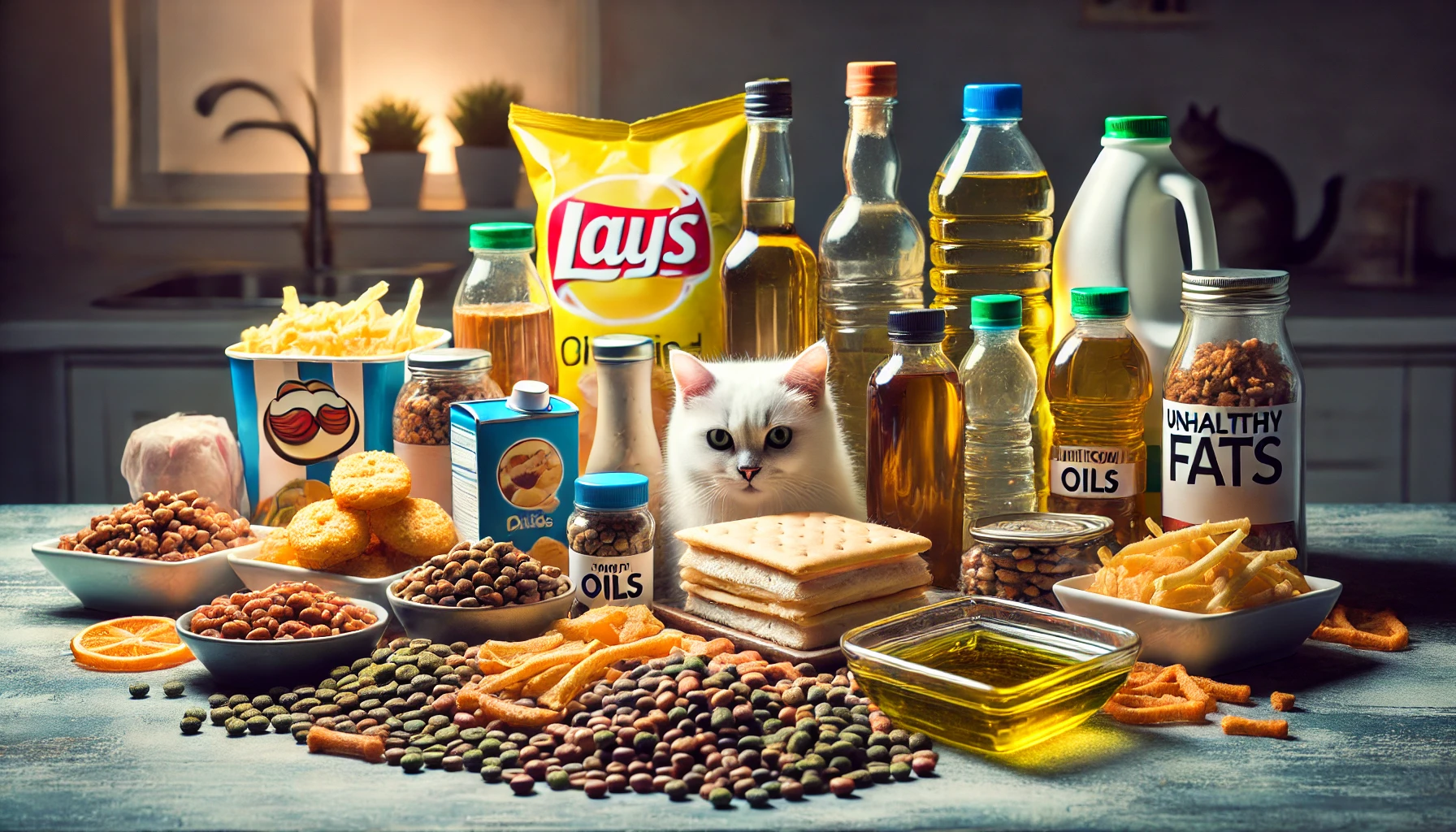
Watch Out for Unhealthy Fats
While fats are essential, not all fats are beneficial.
Trans fats and low-quality hydrogenated oils can lead to obesity, inflammation, and other health problems.
Knowing the differences between healthy and unhealthy fats is crucial for making informed choices about your cat’s diet.
Always check food labels for high-quality fat sources such as:
- Fish oil for Omega-3 fatty acids
- Chicken fat for Omega-6 fatty acids
- Minimally processed fats that retain their nutritional benefits
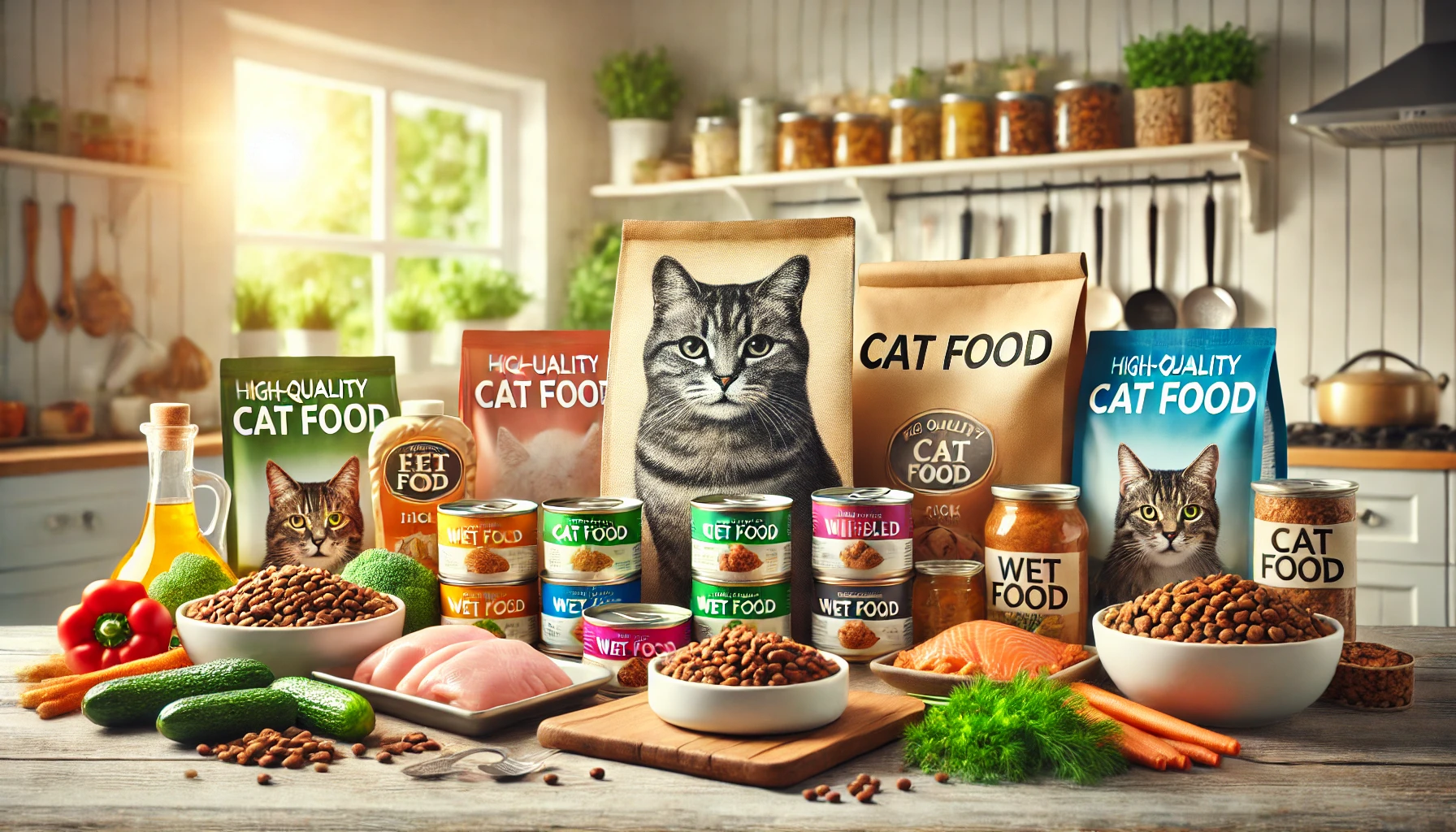
Picking the Proper Food for Your Cat
When choosing cat food rich in healthy fats and oils, it’s important to read labels carefully.
Look for ingredients like fish oil, chicken fat, and flaxseed oil, and avoid vague terms like ‘animal fat’ or ‘meat by-products.’ A balanced ratio of Omega-3 and Omega-6 fatty acids will support your cat’s health, while artificial oils and fillers should be avoided altogether.
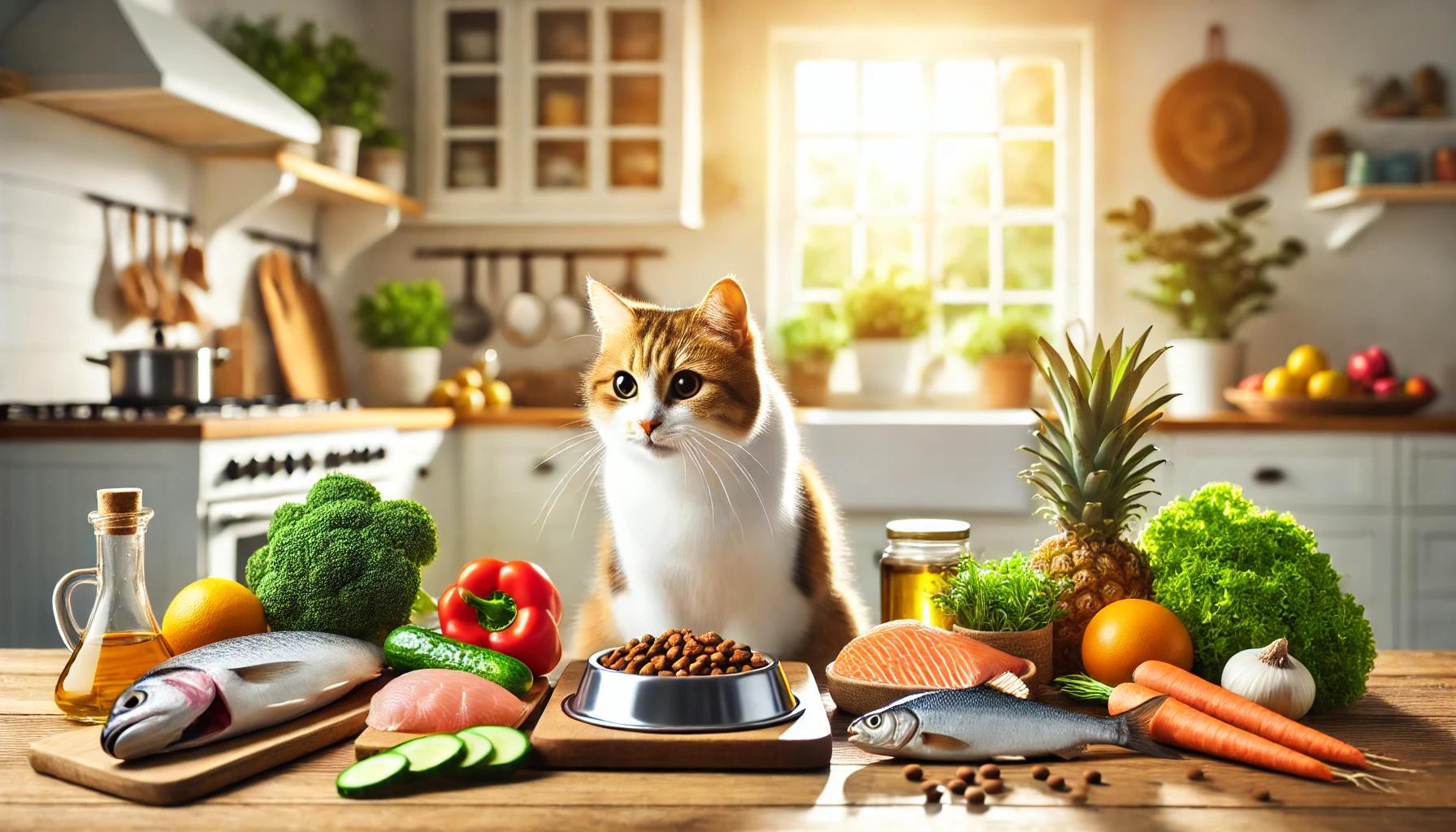
Conclusion
In conclusion, fats and oils are essential for providing energy, maintaining skin and coat health, and supporting brain function in cats.
Understanding the importance of high-quality fats allows you to choose cat food with beneficial oils.
Ensure that your active feline gets food made from natural fat sources and avoid low-quality artificial oils to keep your cat healthy and thriving.
Fats and oils are not only energy sources but are vital for skin, coat, and brain health. Choose quality sources to ensure your cat thrives.
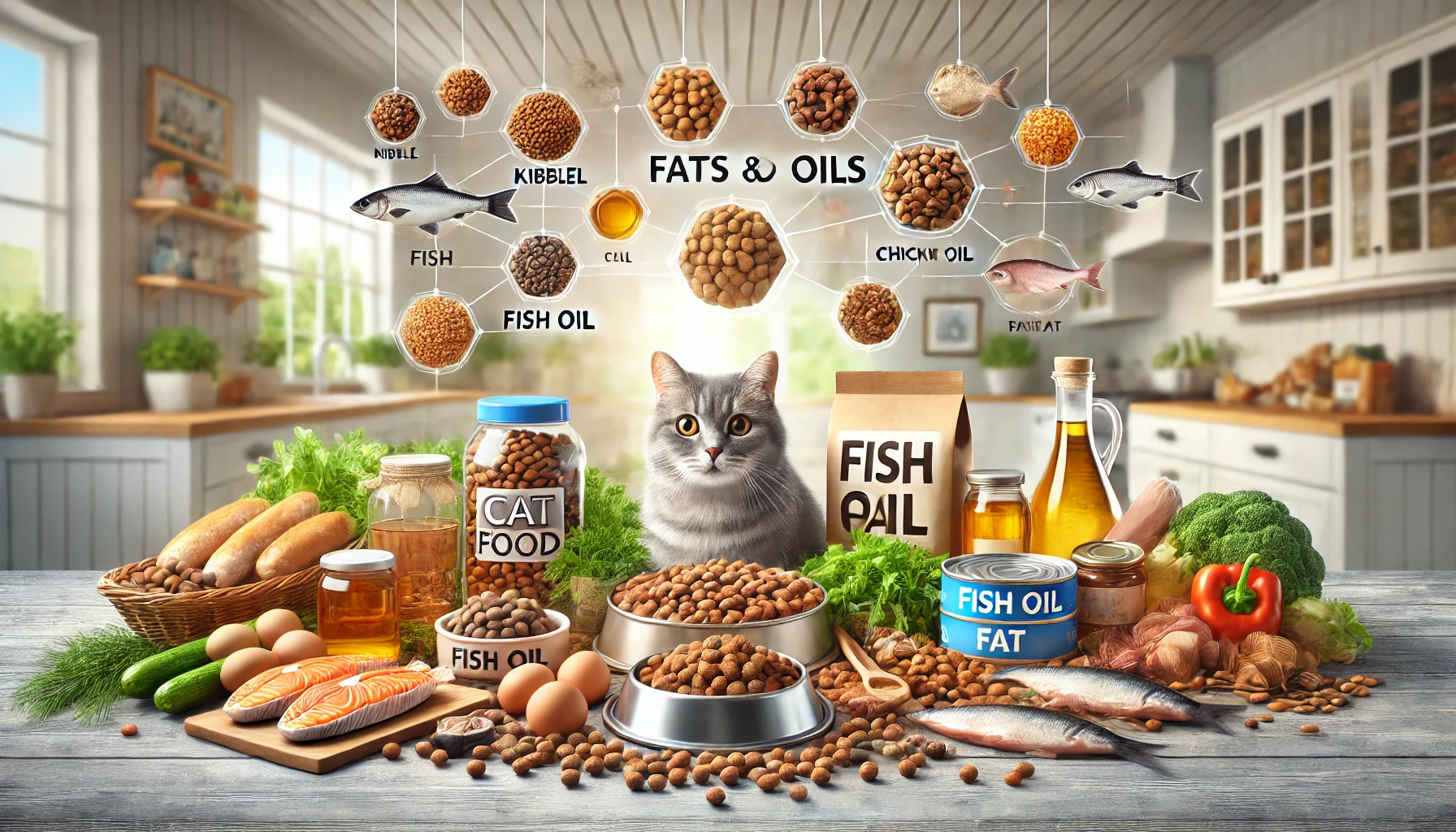
Cat Nutrition: Fats and Oils FAQs
This section answers some of the most frequently asked questions concerning the role of fats and oils in cat nutrition and helps with a better selection of the best food for your feline friend.
Why are fats and oils important to cats?
Fats and oils are not only crucial for energy but also help maintain healthy skin, a shiny coat, and an active brain.
They provide essential fatty acids like Omega-3 and Omega-6, which are vital for your cat’s overall health.
What kind of fat should I look for in cat food?
Look for animal-based fats such as chicken fat, fish oil, or beef tallow.
These provide essential fatty acids and better nutritional value.
Avoid vague terms like ‘animal fat’ or ‘meat by-products’ on cat food labels.
How do Omega-3 and Omega-6 benefit my cat?
Omega-3 fatty acids support brain function, reduce inflammation, and promote a shiny coat, while Omega-6 helps maintain healthy skin.
Both are important for balancing overall feline health.
Can too much fat be harmful to my cat?
Yes, too much fat, especially unhealthy fats like trans fats and hydrogenated oils, can cause obesity, inflammation, and heart issues.
Maintaining the right balance of healthy fats in your cat’s diet is essential.
Is coconut oil good for cats?
Coconut oil provides medium-chain triglycerides, which offer quick energy and aid digestion.
However, it’s high in saturated fats, and cats may benefit more from animal-based fats like fish oil or chicken fat.
How do I ensure that my cat is getting enough Omega-3?
Ensure your cat’s food contains fish oil or supplement with Omega-3 if necessary.
Omega-3 is essential for maintaining brain function, reducing inflammation, and supporting skin and coat health.
Should I avoid all artificial oils in cat food?
Yes, avoid hydrogenated and partially hydrogenated oils.
These synthetic oils can lead to obesity, inflammation, and other health issues.
Always choose cat food with natural, high-quality fat sources.

